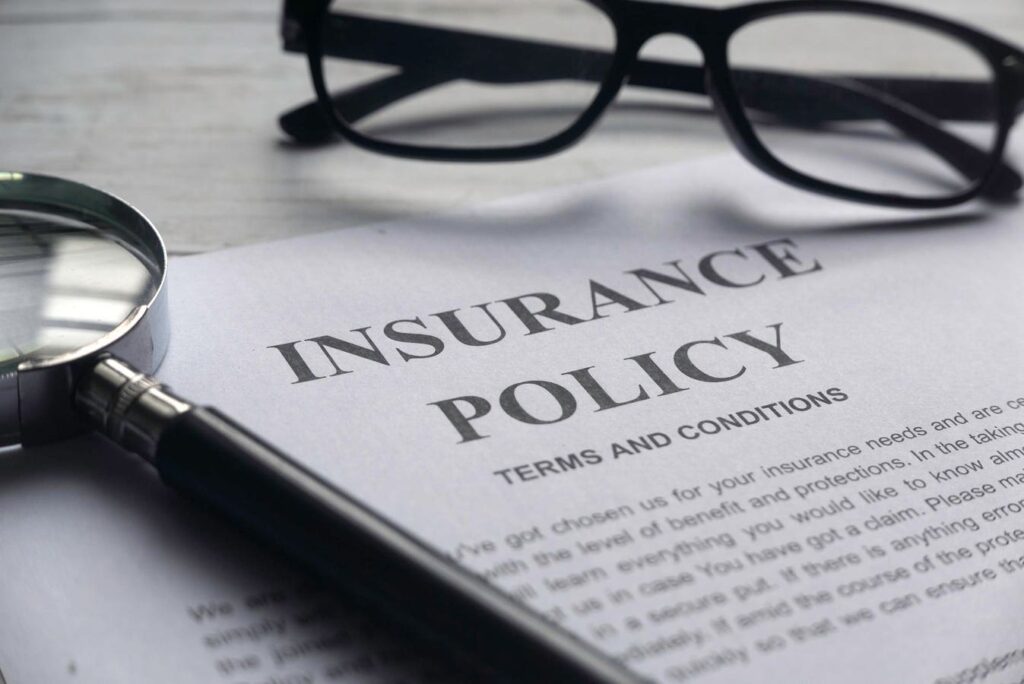I recently met a woman who, despite having a great career and a high income, could not afford to save money for the future because a variety of insurance policies were costing her thousands of dollars per month. Risk averse investors often tell me one can never have too much insurance coverage, but I would contend that isn’t the case. This is how to make sure you are balancing an appropriate amount of risk management with cost to achieve the appropriate amount of insurance coverage.
Determining Your Needs
Whether it is car insurance, homeowner’s insurance, health insurance, life insurance, or disability income insurance, it’s critical to understand your personal insurance need. In this example, let’s assume a 35-year-old primary breadwinner with two children and a mortgage is considering increasing her life insurance coverage and wants to understand what her life insurance need is.
We will consider the following facts if she were to pass away today, and her family could earn 6% on the insurance proceeds:
- Lost annual wages of $100,000 per year, inflated at 3%, until retirement age of 65: $2,040,108.
- Additional $50,000 per year transitional income needed for spouse and children if spouse went to part-time for three years: $145,795.
- Debt obligations: $700,000.
- Funeral expenses: $10,000.
- Public university funding for two kids in 15 and 18 years minus what’s been saved: $160,000.
- Rebuilding household emergency reserves (Based on 3-6 months of household expenses): $30,000.
In this case, the person’s insurable need would be just shy of $3.1 million today. And as time passes, that insurable need will go down because her family’s reliance on her income-earning ability would be reduced. Let’s look 20 years into the future on the same set of facts:
- Lost annual wages of $180,000 per year, inflated at 3%, until retirement age of 65: $1,587,228.
- Retired spouse not in need of transitional income: $0.
- Debt obligations: $200,000.
- Funeral expenses: $10,000.
- Remaining 2 years of university funding: $55,000
- Rebuilding household emergency reserves (Based on 3-6 months of household expenses): $30,000.
Even with the inflated wages and becoming the sole breadwinner, the person has decreased their total insurance need by over $1 million in 20 years. Continuing to pay for over $3 million in coverage could serve to benefit the next generation if the insurance pays out, but it may amount to an unnecessary cost that sets the person back on their other financial goals.
If you’d like to use a calculator for your own insurance needs, here are some good options for:
Understanding The Payouts
All insurance is designed to reduce the risk of a large and unlikely financial cost. Thus, there is a cost and benefit to every type of insurance you might hold. You can hold car insurance and never get in an accident, health insurance and never see a doctor, disability income insurance and never become disabled, and life insurance and never die while your policy is in force.
In fact, the type of life insurance many investors are most familiar with is term insurance. Usually, term insurance is the type of life insurance offered by an employer plan, but you can also have a stand-alone term insurance policy.
Term insurance policies offer coverage for as long as the contract is in force, be it the length of employment or a specified number of years. Generally, it becomes either impossible or cost ineffective to continue your term policy beyond the length of the term. Because most people outlive, convert, or stop being able to afford term policies, about 99% of these policies never pay out.
For whichever type of insurance you hold, it’s critical to understand which events will trigger a payout before purchase. In the earlier example of the professional with more insurance than she needed, she was paying a hefty sum per year for a disability income insurance policy. She was also part of an organization that provided support for those in her profession if they couldn’t work for an extended period by filling in the labor gaps.
The professional may have felt like she was covering all her bases to reduce risk, but what she was really doing was making it so the disability policy she was paying so much for was unlikely to pay out even if she became disabled. For most disability income policies, if you cannot prove loss of income, you cannot cash in on the benefits.
Balancing Cost And Benefit
Now that we understand how to measure insurance need, why to hold insurance, and when insurance pays out, you can balance the cost versus the benefit. If you have assets or safeguards in place to protect from losses, your insurance need is reduced. For most insurances, except perhaps health insurance and permanent life insurance, you should operate with the assumption that the policy is unlikely to pay out but will provide a payment if a large and improbable event occurs.
Conclusion
In conclusion, while insurance is essential for mitigating financial risks, it’s crucial to assess and adjust your coverage to fit your actual needs. Over-insuring can lead to unnecessary expenses that could hinder your financial goals. Regularly evaluate your insurance policies based on changing life circumstances and balance the cost with the potential benefits. This ensures financial protection without compromising other priorities, like saving for the future.
This informational and educational article does not offer or constitute, and should not be relied upon as, tax or financial advice. Your unique needs, goals and circumstances require the individualized attention of your own tax and financial professionals whose advice and services will prevail over any information provided in this article. Equitable Advisors, LLC and its associates and affiliates do not provide tax or legal advice or services. Equitable Advisors, LLC (Equitable Financial Advisors in MI and TN) and its affiliates do not endorse, approve or make any representations as to the accuracy, completeness or appropriateness of any part of any content linked to from this article.
Cicely Jones (CA Insurance Lic. #: 0K81625) offers securities through Equitable Advisors, LLC (NY, NY 212-314-4600), member FINRA, SIPC (Equitable Financial Advisors in MI & TN) and offers annuity and insurance products through Equitable Network, LLC, which conducts business in California as Equitable Network Insurance Agency of California, LLC). Financial Professionals may transact business and/or respond to inquiries only in state(s) in which they are properly qualified. Any compensation that Ms. Jones may receive for the publication of this article is earned separate from, and entirely outside of her capacities with, Equitable Advisors, LLC and Equitable Network, LLC (Equitable Network Insurance Agency of California, LLC). AGE- 7515081.1 (1/25)(exp. 1/29)
Read the full article here
















